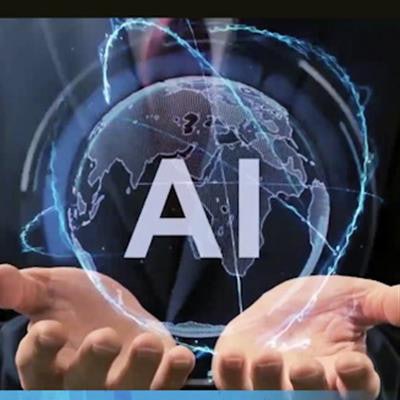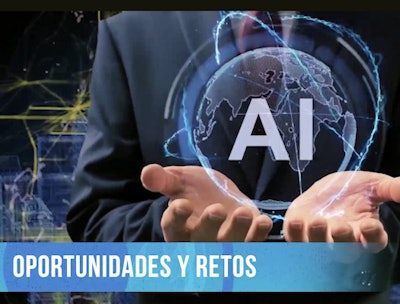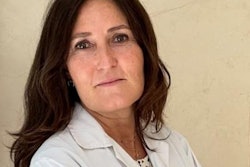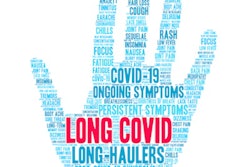
The medical imaging community must commit to artificial intelligence (AI) and not be passive, and it's vital to fight to implement advances in an ethical, professional, and adequate way. That's the view of Dr. Pablo Valdés Solís, who gave the second part of his AI masterclass at the Spanish Society of Medical Radiology (SERAM) congress on 20 May.
"We will improve the tools of AI," he said. "We must lead and not have industry impose the tools on us. We must prevent tools from being used in the wrong way and replacing the radiologist."
AI can assist at all stages -- not only in a diagnosis but also from the moment a doctor orders a test, thanks to the medical history and analysis of previous information. AI can help decide when each test should be performed, according to Solís, who is president of the organizing committee for this year's SERAM virtual meeting.
 AI brings opportunities but also challenges for radiology, says Dr. Pablo Valdés Solís. Screenshots courtesy of Jana Santiburcio of the European Board of Radiology.
AI brings opportunities but also challenges for radiology, says Dr. Pablo Valdés Solís. Screenshots courtesy of Jana Santiburcio of the European Board of Radiology."In the coming years, it will improve and we will experience a paradigm shift," he noted. "There are already examples of video cameras integrated into conventional radiology machines that use complex algorithms to determine patient position and to orientate the patient. Protocols can be adapted to each patient. Ultra-short MRI sequences are being designed; in less time, better quality images are obtained and with only one image you can simulate the usual sequences."
For the study report, AI can be of great benefit because it can create alarms about important findings, and the radiologist will have to take them into account. AI can provide basic information, such as the calcium load in the coronary arteries and whether there is a rib fracture or a certain anomaly. This is already being done on some scanners, and it will allow radiologists to create a structured report and improve communication, Solís explained.
Quality and safety management is an invaluable help, he continued. Google, Apple, and Amazon already use these systems to optimize their services. "It is already starting to be used in a very basic way, but when we manage to interconnect centers, we will be able to see results in real-time."
'Revolutionary' change
Two technologies look set to be revolutionary: quantum computing (radiologists work more and more exponentially and with greater computing power) and 5G connections.
"AI will bring about a sociological change in our work," he said. "Images are now big data. Personalized medicine and advanced topics such as biomarkers will appear and we will lose control; the truth will be in the hands of machines. We will move to probabilistic medicine."
 Implementation of AI can involve both ups and downs, Solís warns.
Implementation of AI can involve both ups and downs, Solís warns.Programming itself will change and improve AI programs, and we will enter a phase that Eric Sadin, the French philosopher and author, calls 'postprogramming,' Solís commented.
A further step forward in the revolution was deep learning, particularly neural networks with a minimum of three layers. The result of each layer is passed on to the next layer.
"In radiology, we are currently seeing an exponential growth in publications -- in fact, we are overflowing with them," he said. "Take machine learning: machines learn through a learning dataset (they have basic rules) and end up learning to improve internal rules and reach final conclusions. Sometimes we do not understand how they have obtained the results. They are bottom-up systems -- highly accurate but not intelligent as we understand them."
Solís said he admires the work of Ramón López de Mántaras, an AI pioneer in Spain and "a great communicator." He recommends his 2017 book (Inteligencia artificial) as an informative summary of what AI is. López de Mántaras is research professor of the Spanish National Research Council (CSIC) and director of the AI Research Institute of the CSIC.
Editor's note: This article is based on a translation of Dr. Solís' second AI SERAM presentation. Translation by Jana Santiburcio of the European Board of Radiology.



















